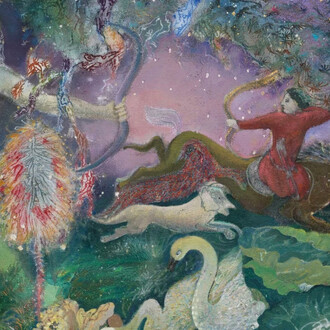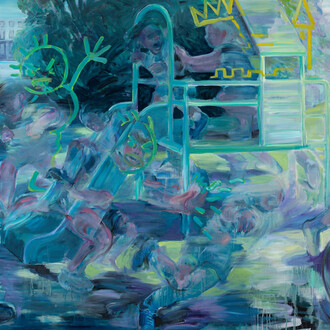On Everest is a series of portraits and landscapes by photographer Sasha Bezzubov, created during multiple treks through Nepal’s Everest region between 2016 and 2024. Throughout these journeys, Bezzubov documented the often overlooked lives of porters, men and women hired to carry supplies across the region’s steep, unforgiving terrain. His images reveal a class of people who are ever present yet largely invisible, forming the backbone of Nepal’s tourism industry while receiving little recognition or compensation for their dangerous labor. This series continues Bezzubov’s long standing exploration of tourism and its impact in the developing world, a focus that began with his 1997 project, “The Gringo Project.”
When Sasha Bezzubov started hiking in Nepal, one of the first things he noticed were the porters (often referred to as Sherpas). These porters are familiar to Westerners - they carry the equipment and supplies needed for trekking and mountaineering expeditions. At least in theory, this work can provide a chance at upward mobility in a region with little economic opportunity.
The group of porters Bezzubov became really interested in commercial porters are the people documented in this project. These porters carry the supplies needed for the lodges that cater to trekkers, from crates of beer to sheets of plywood. Their loads range from an excruciating 130-300 lbs, and because they get paid by weight, they are incentivized to carry as much as possible. They are responsible for paying for their own food and lodging, so to save the little money they earn, they economize on meals and often share a single bed between two or three people. As altitudes rise, so do the prices, and even these sparse accommodations become increasingly costly. The work is physically demanding even outside of the weight they carry, and they are often subject to respiratory infections, altitude sickness and hypothermia. And, unlike expedition porters, the commercial porters generally do not have the opportunity to move up the ranks to become cooks, guides, or expedition leaders, nor do they have much in the way of worker protections.
In this exhibition, the porters inhabit their environment, the Himalayas, and Sasha Bezzubov brings us there through sweeping vistas of rugged mountains, bridges, and high passes. His photographs of fog-shrouded, snow-covered peaks make us gasp, as if the air in the gallery has thinned and we instinctively reach for our jackets. In works like Misty Mountain, where three impossibly steep, pine-covered peaks disappear into dense fog, Bezzubov transports us. Printed at a massive 48 by 60 inch- es, the image feels as though you could step right into it.
In Bridge, a lone porter, dwarfed by the scale of his burden, crosses a long, narrow rope bridge suspended high above a deep chasm. Centered in the frame, the figure appears almost fragile against the dramatic backdrop. The bridge stretches toward the viewer, emerging from a dense wall of pine trees and seeming to sway with tension and altitude.
For the tourists fortunate enough to embark on this arduous journey, the porters are far from invisible— they are in plain sight, yet often overlooked. Sasha Bezzubov compels us to truly see them, acknowledging their humanity. The size and weight of the porters’ loads often seem impossible, sometimes towering several feet above their heads. It’s as close to a Sisyphean task as one can imagine. In Porter with Pipes, a young man stands with half a dozen massive pipes strapped to his back, each more than twice his height. Behind him, hazy mountains fade into the distance. In Porters with Mattresses, two figures stand posed on a rugged, rocky hillside, each carrying a towering stack of brightly colored mattresses and pillows, vibrant oranges and blues, secured to their backs. The surreal load contrasts sharply with the harsh ter- rain.
















